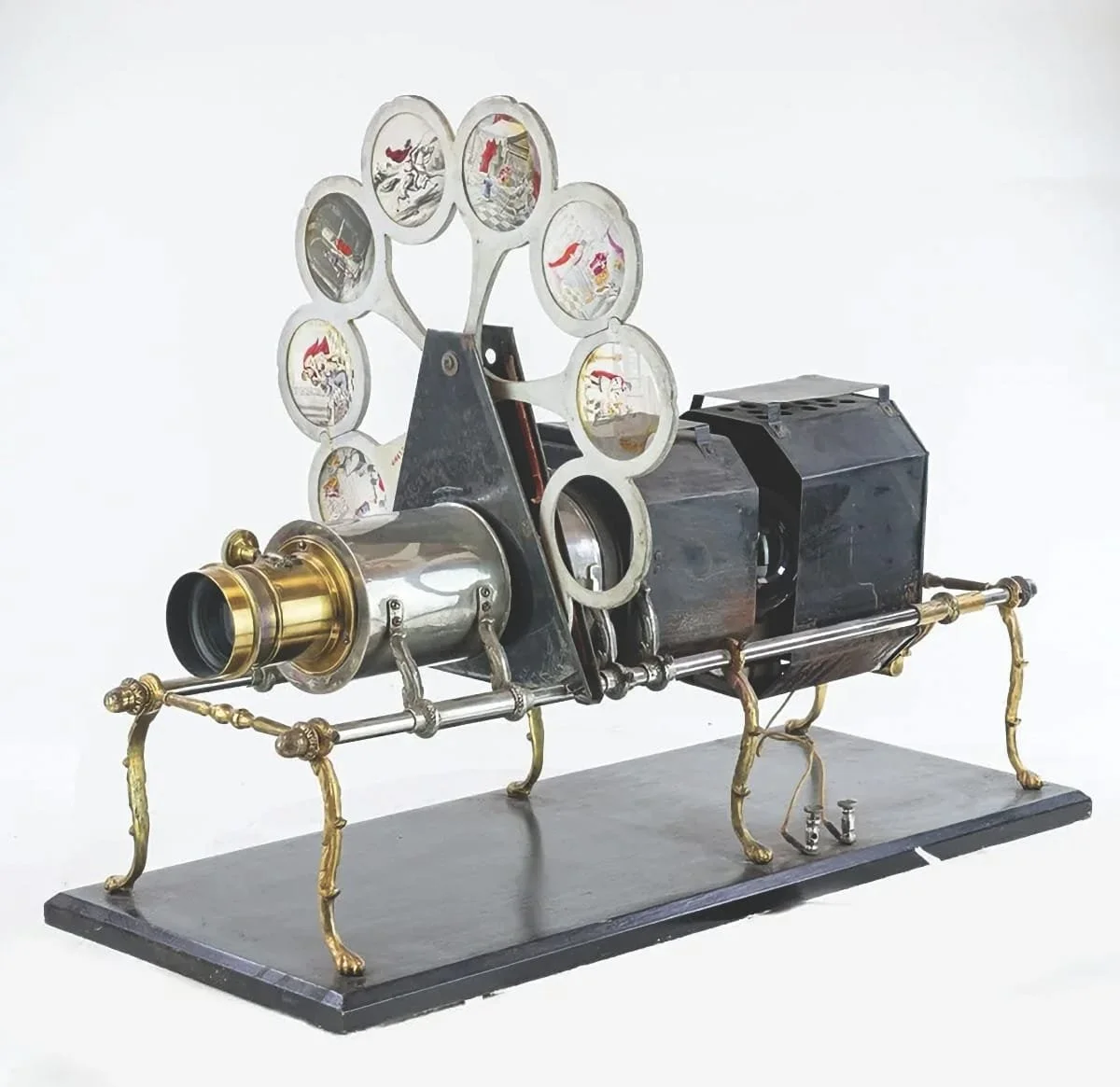Kovels Antiques & Collecting: Magic Lanterns
By Terry and Kim Kovel
Magic Lanterns
According to author Arthur C. Clarke, "Any sufficiently advanced technology is indistinguishable from magic." Look at magic lanterns, which even have "magic" in their name. They were used in Europe by the 1650s. Traveling showmen used them to apparently conjure ghosts and demons out of thin air to the shock and amusement of their audiences. Of course, these apparitions were projected by candlelight through the lantern's lens.
The Pettibone Peacock Sciopticon shows how much technology had advanced since the days of the earlist magic lanterns. PHOTO CREDIT: Kovels.com
Oil and gas lamps replaced the candle, and glass slides projected colorful images instead of shadows. By the mid-1800s, the magic lantern had a new name: the stereopticon. Some manufacturers called them sciopticons, arguably putting even more emphasis on the scientific aspects.
One sciopticon model, patented by the Pettibone Manufacturing Company of Cincinnati, Ohio, in 1888, was known as the "Peacock," thanks to the revolving discs holding the painted glass slides, which resembled a peacock's fanned-out tail. This Peacock sciopticon sold at Donley Auctions for $1,845. By the time this style of sciopticon appeared, popular subjects for slides included famous stories, historical figures, morality tales, exotic scenery and scientific illustrations.
* * *
Q: Can you tell me about what I call a "foot stool"? It belonged to my grandparents born 1883 and died 1969. After their death, it went to my aunt and after her death, I inherited it in 2008. I have no idea when it was purchased and have recovered it. There are no markings on it and no damage. The solid wood cylinder is 4 inches wide, 14 inches in circumference and 13 inches long. It stands 9 inches tall with four 6-inch feet at an angle, and with two 3-inch-long knobs at each end to make it about 20 inches long total. Everyone who sees it remarks how interesting it is!
A: Your foot stool sounds like a gout stool. Gout is a form of arthritis that can cause joint pain, especially in the ankles and toes. In the 18th and 19th centuries, there were several styles of gout stools, designed to deep weight off the feet and relieve the pain. Some were made like miniature rockers. Yours sounds like a "rolling pin" type, so-called because of its shape. Some of them had features like a rotating cylinder to massage the foot or ankle, or adjustable legs to get the stool to the right height for different users. Some are still made today. Antique gout stools by unknown makers usually sell for under $100.
TIP: Never laminate a paper collectible, whether it's a document, photo, letter, press pass, cut autograph, or baseball card. Lamination is permanent and permanently decreases value.
CURRENT PRICES
Box, candle, mahogany, slide lid, two notches at front, lower drawer, dovetail construction, late 1800s, 6 x 11 inches, $65.
Sandwich glass, toy, flat iron, figural, amethyst, wheel molded, factory polished, c. 1860, 1 1/4 inches, $285.
Rug, Grenfell, pictorial, three Canada geese, flying, pine trees, shaded orange ground, label, c. 1925, 26 1/2 x 40 inches, $1,375.
For more collecting news, tips and resources, visit www.Kovels.com
(c) 2025 King Features Synd., Inc.

